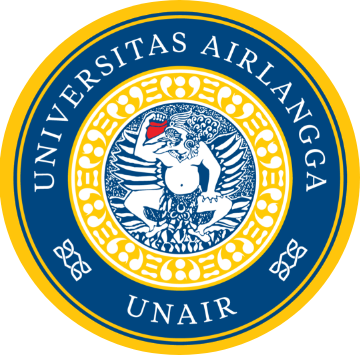Online learning is increasingly playing an essential role in adapting during the COVID-19 pandemic. It is to ensure that learning outcomes are achieved even in different conditions from before. The massification of the online learning process has occurred in almost all countries in the world. This case also occurs in the online learning at Universitas Airlangga which has become a particular policy during a pandemic. The data for March 2020 (before the pandemic) shows that the percentage of active subjects using e-learning is only 33.5%, then it increased in April 2020 (during the pandemic) to 65.9%. This data is the average percentage taken from all faculties and departments at Universitas Airlangga. In the Vocational Faculty, the increase is higher than that of Universitas Airlangga. Data in March 2020 (before the pandemic) shows that the percentage of active subjects using online learning methods is only 34.8%, then it increased dramatically in April 2020 (during the pandemic) to 70.2%. It is shown that online learning activities have increased by 35.4%.
Developing an online learning system has been developed simultaneously by many universities and educational institutions. Universitas Airlangga also developed Learning Management System (LMS) named Airlangga University e-Learning Application (AULA). This LMS has been developed since 2008, which is an integration between cloud computing and the e-learning platform system.
Before the COVID-19 pandemic, AULA was only used as an alternative for lecturers who could not be physically present in the classroom in the learning process. Since March 2020 or in the middle of the even semester 2019/2020, all learning activities are carried out online. This condition is following government and campus policies so that all activities of lecturers, students, and employees are carried out from home or Work from Home (WFH) as a consequence of the outbreak of the COVID-19 pandemic.
The online learning system in AULA must fulfill three main aspects, namely D-I-A:
1. Delivery of Learning Materials (Delivery)
2. Discussion Activities (Interaction)
3. Learning Evaluation Process (Assessment)
This aspect is used to measure the learning outcomes of students who have participated in online learning activities. This study was conducted to analyze and evaluate the perceptions of Vocational Faculty students about their satisfaction after participating in online learning in both theoretical and practical classes as a characteristic of vocational education. The data were collected by using an online questionnaire filled out by students.
The AULA portal, the official LMS for e-learning at Universitas Airlangga, remains an essential component of e-learning for Vocational Faculty students. AULA is considered an integration between cloud computing and an e-learning platform that allows material distribution, interaction, and assessment. However, simultaneously, web services provided via the internet are also an essential component in student e-learning. WhatsApp, Facebook, Google search, Zoom, and Google Meet are some of the public platforms that are provided through cloud computing as an AULA alternative.
The idea to facilitate online practicum lectures was directed by developing a Virtual Laboratory (V-Lab) on the AULA platform. A virtual laboratory is a system that can be used to support conventional practical systems. V-Lab can provide opportunities for students to carry out practicum virtually. The development of the V-Lab has become a concern for many parties to be developed in conjunction with the vocational education system.
The findings in this study indicate that the implementation of online practicum classes is still not able to accommodate students’ interests related to the full mastery of skills from practicum classes. In the practical class, the role of a lecturer is still limited to being a teacher, not an instructor. Apart from this dichotomy, the combination of vocational education and training with E-learning during a pandemic is considered the only logical choice. This is because learning objectives can only be achieved using this method compared to having to face to face during the Covid-19 pandemic. One thing to be underlined is that institutions are expected to develop an advanced e-learning platform to evaluate and revise distance learning programs, particularly for the practicum class as a hallmark of vocational education.
Authors: M. Nilzam Aly, dkk
More detail on the research can be viewed on:
https://journal.staihubbulwathan.id/index.php/alishlah/article/view/924









